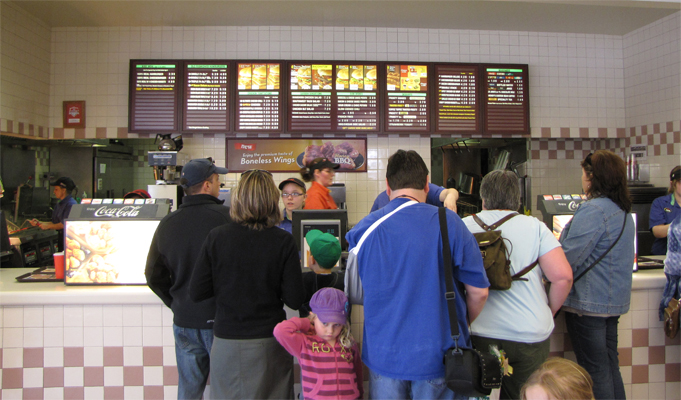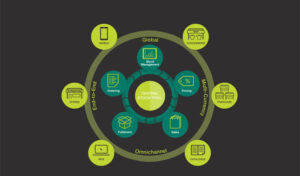With Omnichannel strategy gaining ground in India, the retail sector is looking up to myriad innovations that will help them to tap tech-savvy customers.
The sector is responding to shifts in the consumer-buying behaviour. However, consumer behaviour is changing faster than the number of channels opening up to the retail sector for addressing consumer needs.
The fight to claim customers has made the Omnichannel approach a must for retailers’ survival.
Here are a few things a retailer must adapt & adopt to retain customers:
1Meeting Customer Expectations
According to Group Chief Marketing Officer and Head of Digital Strategy & International Plaforms, Askme.com, Manav Sethi, “The various interactions consumers have with digital media and digital platforms have rewritten the arc of the consumer decision journey, causing shoppers to become accustomed to a much greater level of convenience, choice and accessibility.”
Sethi says that the use of a variety of online-only features – such as personal recommendations, product reviews from other customers, huge product assortments and availability, and one-click everything – has given shoppers the power to make purchasing decisions much more on their own terms.
“When the doors swing open to the temperature-controlled confines of a store, shoppers bring many of these expectations with them.”
Meeting customer expectations holds the key to success in retail and adopting the omni-channel approach appears to be a good bet in addressing the ever-changing customer expectations.
Quite a few of these expectations are already being fulfilled and the bar for meeting such expectations is being set higher every passing day. Modern retail is already taking steps to become a 24×7 proposition. Soon, delivery commitment will be curtailed to within 30-minutes or as per customers’ convenience or even lesser time than ordering a pizza! In fact, Amazon has been testing its 30-minute drone delivery idea for sometime now!
So it could well be a robotic approach! Ordering products from the nearest possible location will be available on customers’ smartphones or even smartwatches! The line between offline and online shopping will become indistinguishable even as consumers will gain access to unheard benefits and services.
2Apps Above the World
Retail outlets are getting digitised and in the future, augmented reality (AR) centric efforts will play a big role in winning customers. All information, activities, customers’ behaviour inside a store, etc.,will be crunched and analysed for clues to predict shopping behaviour and consumption patterns. Consider this. While passing a retail store (on your way from office), you get an SMS updating
about the product you have been searching online recently, and which is available at this outlet. No wonder, you will invariably make that purchase.
The very next day, you will receive a discount coupon online for another purchase,which would be applicable only through outlet’s in-store app. This will lure you to download the app. Now, when you enter the store (physically or through this app), this app will guide you to all corners of the store to find a another co-related product. Thus, digitised retail store will be able to engage customers without any salesperson’s intervention. Retailers can even target individual shoppers with offers based on their personal profile data and previous purchase history.
“Omnichannel models can drive greater customer value in many ways. Customers can enjoy the convenience of online discovery and ordering along with faster hyper-local fulfillment, they can try products before buying them, they can access value-added services and expertise as part of their purchase, including returns or repairs,” says Head Omnichannel, Jasper Infotech Pvt. Ltd / Snapdeal.com, Badal Malick.
He adds that the overall shopping experience can be made far more delightful with greater assortment, transparent prices, no stock outs or long checkout queues, and friction-less payments.
3Targeting Youth
Going forward, the retail sector will offer solutions that provide consumers’ instant shopping gratification. Retailers will invest more on robust order fulfillment systems and efficient customer service through various channels. Talking about the youth, wearable gadgets will become increasingly visible in times to come. From smart watches, glasses to fi tness monitors, many wearable gadgets will nudge the retail sector to try out innovative strategies where ‘customer connect’ can be achieved seamlessly.
The spending on consumer wearable technology worldwide (report by Juniper Research) was tipped at US$1.4 billion by the end of 2014 and is expected to hit US$19 billion by 2018. If this is an indication to go by, retailers will definitely need to come up with solutions for leveraging on the information given out by wearable gadgets.
4Selling Through Social Media
While social media is a critical sphere that has diminished the distance between offline and digital channels, it is itself emerging as an obvious channel for retail commerce; for example, the ‘Buy’ button on Facebook and Twitter. It is helping businesses to drive sales through Twitter News Feed and on Facebook Pages.
On Facebook, with this feature, people on desktop or mobile can click the ‘Buy’ call to-action button on ads and Page posts to purchase a product directly from a business, without having to leave Facebook.
5Customer Loyalty
While customer loyalty is considered an important part of retail-consumer relationship, the framework of this relation will go through drastic changes. Retailers need to be imaginative in their reward programmes and give shoppers the benefits for their actions and engagements, rather than just purchases. Loyalty apps have already made inroads in this direction.
Offline approach for online people If customers can’t visit stores and are missing out on the shopping experience…no problem, the store will come to them. Yes, the merging of offline deliverables with online shopping would be an apt option.
Here, customers will use instore app to visit the store, just like the 3D video games played on smartphones, to go through the various counters, checking new arrivals, selecting the right size option, colour, etc., by using check-boxes. Then the virtual fitting room (discussed above) will help figure out how one will appear after wearing the purchased items. Buying process would be so much real even on the virtual platform. It will be a child’s play.
Engaging with shoppers, both before a sale and during a purchase— online as well as offline is going to set the norm for future retail.
6Merging Online-Offline Relationship
Omnichannel approach will force online entities in retail to bring out their brick and mortar stores. So, there will be a shift expected from online to offline side as well, which has started taking place. Hence, physical stores will continue to remain critical with a redefined approach to cater online consumer traffic.
Various brick-and-mortar stores, hence, will act as warehouses or distribution centres. The inter-dependency of offline and online retail formats will only increase.
There is another instance that tells us how the relationship between online and offline retail commerce is blurring. In the West, customers visiting malls are getting attracted by interactive windows – digital storefronts, a good ‘shoppable window’ proposition, where customers can simply choose products and pay through PayPal or Paytm option.
In fact, eBay did just that last year in San Francisco and New York. And, ‘Virtual Shopping Wall’ called ‘Scan N Shop’ at the Indira Gandhi International Airport in New Delhi is another credible example to go by. The online options are going to lure offline sales and vice-versa.
The need to make payment instantly will make mobile payment technologies come up with innovative ideas. In this context, the mobile wallet application market is something retailers simply cannot ignore. The Merchant Customer Exchange’s CurrentC, Google Wallet, etc., are some alternatives that retailers can look forward to.
7All in the Cloud
Cloud-based software solutions have been probably developed keeping in mind the Omnichannel requirements. For example, as a single entity NetSuite SuiteCommerce seamlessly connects e-commerce, order management, fulfillment, inventory management and point of sale (POS).
Hence, it has a greater impact on the success of a company’s retail channels. Cloud is the future to gain a complete control over various operations involved in a retail business. The underlying
fact is to integrate Omnichannel commerce,customer relationship management (CRM), inventory, order and warehouse management systems in the cloud and be available to customers everywhere.
The success probability of Omnichannel retail will rely on how easily, and possibly from a remote location, the various operations can be performed seamlessly. Those retailers who are ready to adapt to the technology-shift taking place in this sector will continue to remain on top-of-the-mind of their customers.














